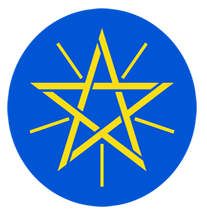Ethiopia: Government
Key Figures
- Chief of State:
- President Sahle-Work Zewde
- Head of Government:
- Prime Minister Abiy Ahmed Ali
Overview
- Government Name:
- Federal Democratic Republic of Ethiopia
- Constitution:
- Adopted: 1995; Provides for a federal government of nine ethnic-based regions governed by a bicameral parliament. Guarantees that all Ethiopian languages will be equally recognized by the state, but Amharic is considered to be the working language of the federal government.
- Government Type:
- Federal Republic

Index of Economic Freedom
Country Risk Rating
Government Branches
| Main Powers | Election Process | Election Cycle 1 | |
|---|---|---|---|
| Executive | The highest executive powers are vested in the prime minister, whose duties include approving the house of people's representatives nominees for ministerial posts, being the chairman of the council of the ministers, and being the commander-in-chief of the national armed forces. |
The president is indirectly elected by the parliament. The prime minister is elected by parliament. |
6 years |
| Judicial | Supreme federal judicial authority is vested in the federal supreme court. Judges shall exercise their functions in full independence and shall be directed solely by the law. The federal supreme court shall draw up and submit to the house of peoples' representatives for approval of the budget of the federal courts, and upon approval, administer the budget. |
The president and vice president of the federal supreme court are nominated by the prime minister and appointed by the house of people's representatives. Other supreme court judges are nominated by the federal judicial administrative council and appointed by the house of people's representatives. |
Mandatory retirement age of 60 |
| Legislative | The legislature takes measures which promote unity with the consent of the people, and manages the implementation of the rights of nations and nationalities that fall under the jurisdiction of the house of the federation, as well as present recommendations in determining the division of revenues derived from joint federal and state tax sources which are proposed by the executive branch, and the subsidies that the federal government may provide to the states. |
The house of federation has a maximum of 153 seats, 110 members elected by indirect vote. The house of people's representatives has 547 members elected by plurality vote in single member constituencies. |
5 years |
Regional Trade Blocs
International Organization Participation [2]
Environmental Agreements [3]
Tax Information [2]
- Tax Authority:
- Information not available
- Tax Name:
- Information not available
Sources:
- ElectionGuide http://www.electionguide.org/
- EY, http://www.ey.com
- CIA World Factbook, https://www.cia.gov/the-world-factbook/
- U.S. Bilateral Relations Fact Sheets http://www.state.gov/r/pa/ei/bgn/


